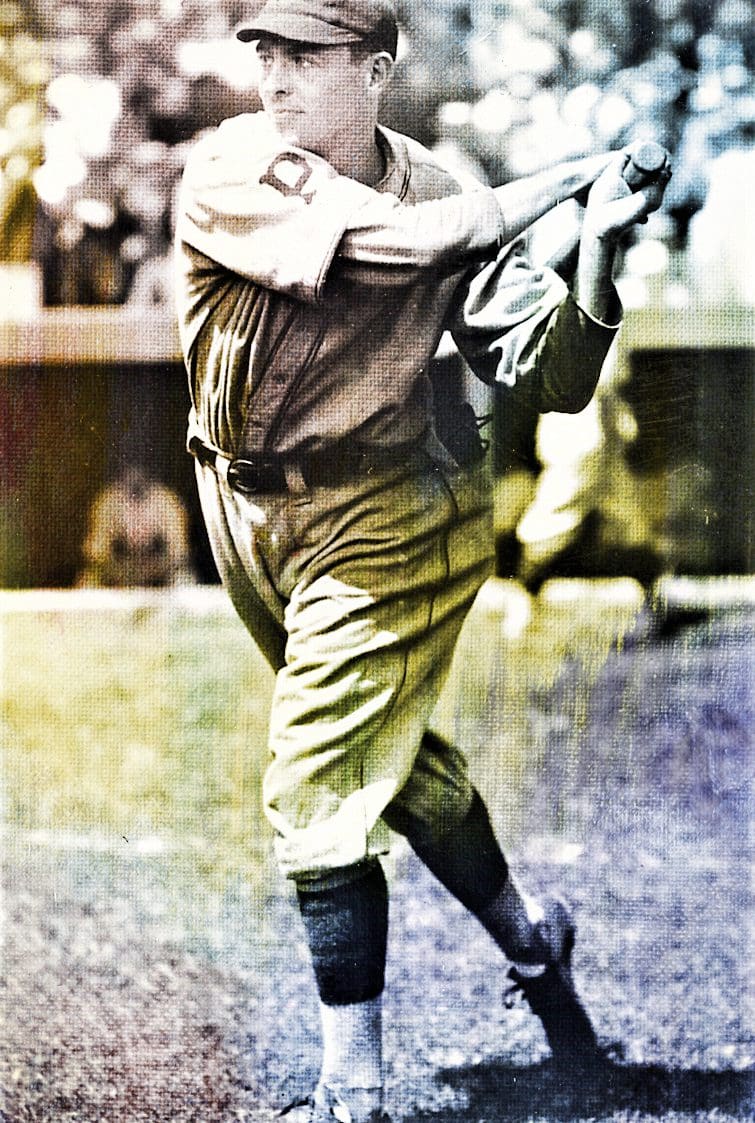Wright has drawn a free base 209 times while being called out on strikes on 407 plate appearances. His on-base % is .328 and he is the owner of a lifetime OPS of .371. He has compiled 584 runs and also has 723 runs batted in. He has gone yard 94 times, with 1,856 total bases and also a .042 slugging percentage. Over the course of the 4,153 official at-bats in his pro career, Wright has hit .294 with 1,219 base hits.
Glenn Wright
| # | Preview | Product | Price | |
|---|---|---|---|---|
| 1 |

|
Ashes to Ashes (Song of the Phoenix Book 1) | $3.99 | Buy on Amazon |
| 2 |

|
I Sleep in My Own Bed |
$21.99 |
Buy on Amazon |
Glenn Wright, born on February 6, 1901, in Archie, Missouri, made his MLB debut on April 18, 1924, with the Pittsburgh Pirates. Over his career, he played for the Pittsburgh Pirates and the Brooklyn Robins (later known as the Dodgers). Wright’s career spanned from 1924 to 1935, during which he established himself as a formidable baseball hitter. His time in the MLB was marked by impressive performances and notable achievements that have left a lasting impact on the sport.
Early Years and DebutGleyber Torres MLB Baseball Hitter
Wright’s journey to the MLB was marked by dedication and talent. Before joining the major leagues, he honed his skills in the minor leagues, where his impressive performance caught the attention of MLB scouts. His debut with the Pittsburgh Pirates was the beginning of a noteworthy career, characterized by consistent performance at the plate. As a young player, Wright showed a remarkable ability to adapt and grow, quickly earning a reputation as a reliable and skilled hitter.
The transition from minor league to major league baseball is a challenging step for any player, but Wright’s seamless adaptation highlighted his natural talent and work ethic. His early years in the MLB were a testament to his perseverance and determination, as he continually refined his techniques and expanded his understanding of the game. His commitment to improvement set the stage for a career filled with memorable moments and achievements.
Career Highlights
During his time in the MLB, Glenn Wright was known for his powerful hitting and reliable fielding. One of his most significant achievements was completing an unassisted triple play in 1925, a rare feat that cemented his place in baseball history. Wright’s contributions to his teams were instrumental in their successes, and his batting average consistently reflected his skill as a hitter. His ability to deliver under pressure and perform in crucial moments made him a valuable asset to any team he played for.
Wright’s career was also marked by several standout seasons where his performance at the plate was exceptional. His consistent ability to drive in runs and maintain a high batting average made him a feared opponent for pitchers across the league. Beyond his individual achievements, Wright played a key role in his teams’ successes, often stepping up in critical games to lead his team to victory. His career highlights are a testament to his skill and impact on the game.
Understanding Baseball Swing Mechanics
The art of hitting a baseball is complex, requiring precision, timing, and a deep understanding of swing mechanics. Glenn Wright’s approach to hitting can serve as a valuable lesson for modern players seeking to improve their skills. By analyzing the intricacies of his swing, players can gain insights into the elements that contribute to successful hitting and how to incorporate them into their own game.
The Fundamentals of a Great Swing
At the core of any successful baseball hitter is a solid understanding of swing mechanics. This includes the stance, grip, and follow-through. Wright’s swing was characterized by a balanced stance, allowing him to generate power while maintaining control. His grip on the bat was firm yet flexible, enabling quick adjustments to different pitches. These fundamental elements of his swing mechanics were crucial to his success and can be emulated by players looking to enhance their hitting abilities.
In addition to the basic mechanics, Wright’s focus on the mental aspect of hitting contributed significantly to his prowess at the plate. Visualization and concentration were key components of his approach, allowing him to anticipate pitches and react accordingly. His ability to stay composed and focused in high-pressure situations was a testament to his mental discipline, an aspect of hitting that is often overlooked but essential for consistent performance.
Timing and Rhythm
Timing is crucial in baseball. Glenn Wright excelled at reading pitches and adjusting his swing accordingly. His rhythm at the plate allowed him to make contact with the ball more consistently, a skill that aspiring hitters should strive to develop. Practicing timing through drills and live pitching can help players improve their ability to connect with the ball. Wright’s mastery of timing was a result of countless hours of practice and a deep understanding of the game’s nuances.
Developing a sense of rhythm and timing is essential for any hitter, and Wright’s approach offers valuable lessons in this regard. By focusing on the tempo of his swing and the timing of his movements, Wright was able to consistently make solid contact with the ball. This level of precision requires a keen awareness of the pitcher’s tendencies and the ability to adapt quickly, skills that can be honed through dedicated practice and experience.
Hitting Drills Inspired by Glenn Wright
To emulate Wright’s success, players can incorporate specific hitting drills into their practice routine. These drills focus on improving swing mechanics, timing, and overall hitting performance. By consistently practicing these drills, players can develop the skills necessary to become more effective hitters and gain confidence at the plate.
Tee Work
Tee work is an essential drill for honing swing mechanics. By setting up a ball on a tee, players can focus on their stance, grip, and follow-through without the pressure of a moving pitch. Regular tee work helps solidify the fundamentals of a great swing, much like Wright’s. This drill allows players to break down their swing into its individual components and make adjustments as needed.
In addition to refining swing mechanics, tee work also helps players develop muscle memory, which is crucial for consistent performance. By repeatedly practicing their swing in a controlled environment, players can engrain the correct movements into their muscle memory, leading to more natural and fluid swings during games. Tee work is a versatile drill that can be adapted to focus on specific aspects of the swing, making it a valuable tool for any aspiring hitter.
Soft Toss
Soft toss drills involve a coach or partner lightly tossing balls to the hitter from a short distance. This drill emphasizes hand-eye coordination and timing, allowing players to practice making solid contact with the ball. Wright’s ability to adjust his swing to different pitches can be developed through consistent soft toss practice. This drill challenges players to react quickly and make precise adjustments, honing their skills in a dynamic setting.
The soft toss drill also helps players build confidence in their ability to hit different types of pitches. By practicing with a variety of pitch speeds and trajectories, players can become more comfortable with adjusting their swing to match the situation. This adaptability is a key aspect of effective hitting, and soft toss drills provide an excellent opportunity to develop this skill in a supportive and controlled environment.
Live Pitching Practice
Ultimately, facing live pitching is crucial for any baseball hitter. This practice allows players to apply their swing mechanics and timing in a game-like setting. Wright’s success at the plate was due in part to his ability to adapt to different pitchers and pitches, a skill that can be developed through regular live pitching practice. This drill simulates the pressures and challenges of a real game, helping players build resilience and confidence.
Live pitching practice also provides players with the opportunity to apply their mental strategies and focus techniques in a competitive environment. By facing live pitchers, players can test their ability to read pitches, anticipate movements, and make quick decisions, all of which are critical components of successful hitting. Regular exposure to live pitching helps players refine their techniques and build the mental toughness needed to excel at the plate.
The Legacy of Glenn Wright as a Baseball Hitter
Glenn Wright’s impact on MLB and the art of hitting extends beyond his career statistics. His approach to the game, both at bat and in the field, serves as an enduring example for baseball players of all levels. Wright’s legacy is a testament to the timeless qualities that define great hitters and the enduring influence he has had on the sport.
Consistency and Adaptability
One of Wright’s defining traits was his consistency at the plate. Despite facing various pitchers and playing in different conditions, he maintained a high level of performance. This adaptability is a key lesson for modern players, emphasizing the importance of adjusting one’s approach based on the situation. Wright’s ability to remain consistent in the face of adversity is a testament to his skill and mental fortitude, qualities that are essential for success in any sport.
Adaptability is a crucial trait for any athlete, and Wright’s career exemplifies the importance of being able to adjust to changing circumstances. Whether it was adapting to different pitchers or adjusting his approach based on game conditions, Wright’s ability to remain flexible and responsive was a key factor in his success. Modern players can learn from his example by developing their own adaptability and resilience, enabling them to thrive in a variety of situations.
Mentoring Future Generations
After retiring from professional baseball, Wright remained involved in the sport, sharing his knowledge and experience with younger players. His commitment to mentoring future generations highlights his passion for the game and his desire to see baseball continue to thrive. Wright’s dedication to nurturing talent and fostering a love for the sport has left a lasting impact on the baseball community.
Wright’s involvement in mentoring and coaching young players reflects his belief in the importance of passing on knowledge and experience to the next generation. His efforts to teach and inspire young athletes demonstrate the impact that experienced players can have on the development of future talent. By sharing his insights and experiences, Wright helped shape the future of baseball and ensured that his legacy would continue to influence the game long after his playing days were over.
Conclusion
Glenn Wright’s legacy as an MLB baseball hitter is a testament to his skill, dedication, and understanding of the game. By studying his career and techniques, modern players can gain valuable insights into improving their own performance at the plate. Whether through refining swing mechanics, practicing hitting drills, or embracing adaptability, aspiring hitters can learn much from Glenn Wright’s approach to baseball.
For anyone passionate about baseball, Glenn Wright’s story is a reminder of the timeless qualities that make a great hitter: precision, timing, and a love for the game. His contributions to the sport continue to inspire players and fans alike, highlighting the enduring impact of his career and the importance of dedication and passion in achieving success. By embracing the lessons from Wright’s career, modern players can strive to reach new heights and leave their own mark on the sport.





